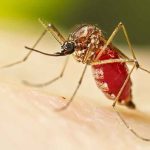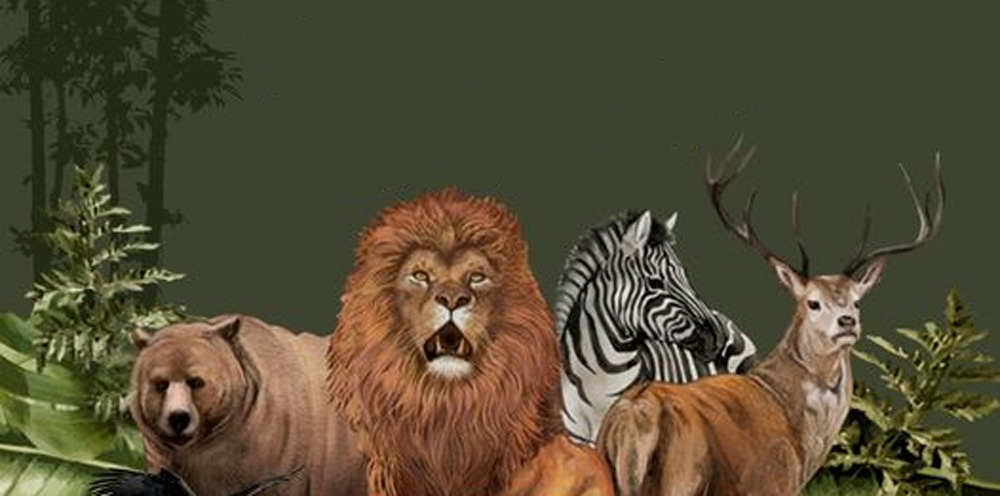Dr N. Munal Meitei,
Environmentalist, email – nmunall@yahoo.in

Understanding and valuing of nature with a dynamic state of coexistence is the character quality for 70th Wildlife Week that takes place from 2nd to 8th October. The choice of dates coincides with the birth day of Mahatma Gandhi who is symbol of non-violence and compassion toward animals. World Animal Day is again celebrated on 4th October to advocate the rights and welfare of animals. The convergence of these days serve as a poignant reminder to protect nurture’s diverse forms of life. With providing multiple beauties, food sources, medicines and flourishing the planet, wildlife are the most precious gift of God.
The theme for this year is “Human-Wildlife Coexistence: मानव वन्यजीव सह-अस्तित्व.” When God created, all animals have their own jurisdiction. Snake will never bite a man, if not we encroached upon their habitat. But human–wildlife conflict occurs when humans negatively affect the needs of wildlife or when the needs and behavior of wildlife impact negatively on humans. Reducing human–wildlife conflict is an urgent priority and key to coexistence. When local communities do not get enough benefit from the wildlife related enterprises, then affected peoples negatively start the interaction.
Wildlife conservation is a team work. We can’t save our planet’s amazing animals and plants alone. Wildlife week is appealing the society about the intricacies of animal life and to unite in preserving our biodiversity, cherishing the magnificent tapestry of life that surrounds us. By taking a stand and fostering a culture of conservation, we can collectively secure a future where both humanity and wildlife thrive in harmony. However, factors like rapid globalization and industrialization have put an unhealthy strain on the wildlife of the planet.
The wildlife have an intrinsic value and contribute to the ecological, genetic, economic, scientific, educational, cultural, recreational and aesthetic aspects. At the heart of wildlife conservation lies the preservation of endangered species. facing threats such as habitat destruction, poaching and climate change. It also reminds us of the urgent need to step up the fight against wildlife crime. Wildlife preservation is also a plan to manage wildlife along with the human progress as both are indispensable.
The alarming reality of species extinction, with over 69% of Earth’s 4 billion species now extinct including 25% of mammals, 1 in 6 bird species and 40% of amphibians are at stark. This rapid loss of biodiversity poses a significant threat to our ecological equilibrium, potentially leading to the extinction of critical flora and fauna, integral components of our delicate ecosystem.
The essence of the week lies in fostering empathy and compassion for a harmonious coexistence where humans play a lead role in ensuring the well-being of these lovely creatures. Any harm to the wilderness can have cascading effects, disrupting food chains, altering nutrient cycles, and destabilising entire pristine ecosystems.
India is one of the only 17 countries that have the distinction of being awarded the title ‘Megadiverse’ for being home to a vast diversity of flora and fauna. The country blessed with 5 hot spots has an incredible variety of plants and animals. India owns 7.8% of the world’s biodiversity, though we share only 2.4% of the global geographical area and harboring 20% of world population and 15% of cattle population. More than 500 species of mammals, 1,220 species of birds, 1,600 species of reptiles and amphibians and 57,000 species of insects populate in this subcontinent. India owns 75% of the world’s wild tiger population, 60% of Asian elephants, 80% of the one-horned rhinoceros and the entire remaining population of the Asiatic lion.
But the rich and fascinating wildlife brings itself with several threats as well. To make the wildlife conservation plans successful, the country has 1102 – Protected areas including 106 National parks, 573 Wildlife sanctuaries, 33 Elephant reserves, 55 Tiger reserves, 115 Conservation reserves and 220 Community reserves covering 1,73,629 sq. km which is 5.43% of geographical area. We also have 85 Ramsar sites of wetland importance.
The present status of wildlife in Manipur which has two hotspots –Himalayan and Indo-Burma is very alarming. The hill districts where maximum of our wildlife florist have the tradition of hunting. In most of the hill areas, due to lack of awareness, wanton killing of wildlife continue. Meats of even scheduled animals are found sometime sold in the open markets. Authorities are still issuing gun licenses which are mainly meant for hunting. Thousands of acres of wildlife habitats are destroyed every year from indiscriminate felling, jhoom cultivation and poppy cultivation. Thus 46% people residing in hills which comprises 90% of state’s geographical area should take the proactive role to conserve the wildlife in Manipur.
This year, due to the ongoing communal crisis, a vast area of forests might have again lost. The wild animals that once roamed abundantly in the state are now almost negligible. The state’s changing climate such as scanty rainfall, rising temperature, cyclones, landslides, floods, diseases and pollution have also given unbearable impacts to our wildlife.
As to preserve wildlife, a family plan trip to wildlife areas may be arranged where kids can easily get the important aspects of wildlife in their own life. The wildlife conservation may also endeavors with the campaigns such as seminars, lectures, awareness programs, workshops, public meetings, slogan, spot painting & essay writing competitions among the youths and students.
In order to conserve our rich wildlife, Manipur has in-situ and ex-situ conservation of Protected Area Network over about 3.7% of our geographical areas. The state government has created one National Park viz. the Keibul Lamjao National Park and Wildlife Sanctuaries viz. Khongjaingamba Ching Wildlife Sanctuary, Yangoupokpi-Lokchao Wildlife Sanctuary, Bunning Wildlife Sanctuary, Dzuko Valley, Jiri-Makru Wildlife Sanctuary, Kailam Wildlife Sanctuary, Shiroy Community Forest and Zeilad Lake Sanctuary.
Wildlife has interconnectedness with nature to maintain our ecological balance. Therefore, it should be our primary responsibility to protect and conserve the wildlife for a thriving future and planet.













